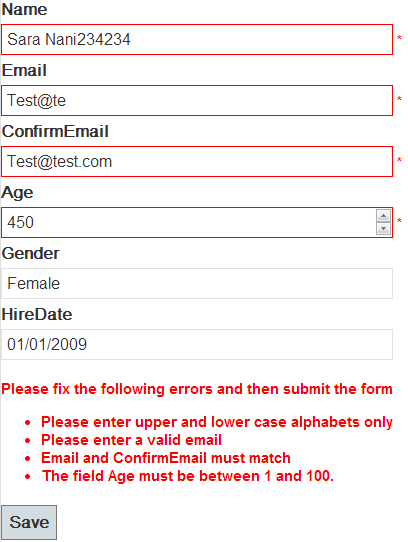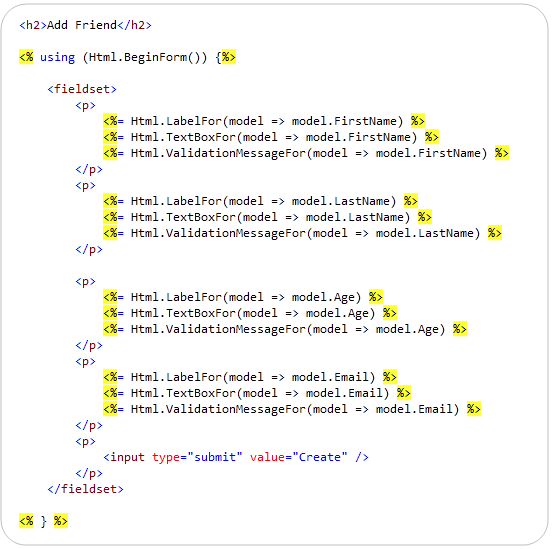

Wwwroot/css to add some colour to inputs and messages in the event of validation failures. The final touch is to add some styles to the site.css file, in Validation is enabled through the inclusion of the ValidationScriptsPartial Standard tag helpers for labels, inputs and validation messages.

The rest of the form could be taken from any application. Is used to provide the translations for the page title, heading and the submitīutton. The CommonLocalizerService is injected into the page, and Get( "Contact") įinally, the form can be created in Contact.cshtml: CommonLocalizationService Localisation. The navigation can be added to the layout page, using the CommonLocalizerService that was createdĪnd injected into the layout page in the last article. These are for the navigation, the title on the contact page and the button that In addition to the data annotation entries, there are three further entries. With the existing (fairly concise) values assigned within the attributes. Resource file needs "translations" for the error messages, unless you are happy Needs translations for most of the same keys as the German one, except for theĪnd Message, which are the same in French as in English. The keys for each entry are the values passed to the Name property of theĭisplay attribute, and the ErrorMessage property of the Only the additional entries for German resource file ( .resx) are shown here Labels and the error messages are added to the English, French and German resources, along with entries for navigation to the Contact page and the submit button on the form. This step builds on the shared resource files that were introduced in the previous article. I haven't included any handler methods in this example because the focus is not on processing posted form values. DataAnnotations Īdd the following properties with data annotation attributes to the ContactModel: The form is a simple contact form, in which all the form fieldsĪdd a new Razor page to the application named Contact.cshtmlĪdd the following using directive to the top of the PageModel file: using System.

PageModel properties that represent values posted from a form. The example that follows demonstrates the use of data annotations on Create( nameof( CommonResources), assemblyName. Var assemblyName = new AssemblyName( typeof( CommonResources). DataAnnotationLocalizerProvider = (type, factory) => AddDataAnnotationsLocalization(options => Last article to support global or page-agnostic resource files. Which is typed to the empty CommonResources class created in the A factory is used to create an IStringLocalizer IStringLocalizer to be used for accessing resources that contain dataĪnnotation translations. In this article, the AddDataAnnotationsLocalizationĮxtension method is chained to enable configuration of the Method is used to add the view localisation services to the application's In the previous article, the AddViewLocalization extension It's empty (has no members) because it is just a Translations forĭata annotations should be made available for use in more than one page, so they need to be set up Page, you can use the PageModel class as the type. If the resources are intended to be used in just one Resources are accessed using a localization provider ( IStringLocalizer) which needs to UseRequestLocalization(localizationOptions) Ī folder named Resources is added to the root of the application, containing an empty class namedĬommonResources: public class CommonResources Localisation options specified in the previous step, in theĬonfigure method: var localizationOptions = app. Localisation middleware is added after routing, passing in the Page-agnostic resource files in the previous article. It was introduced as a means of accessing

The CommonLocalizationService is a wrapper around an IStringLocalizer DefaultRequestCulture = new RequestCulture( "en-GB") Supported by the application are configured: public void ConfigureServices( IServiceCollection services) In ConfigureServices, localization is added to the DI container, specifying the location of resources in the application, and the cultures If you are continuing from the previous article, you will have covered those: The first three steps that follow demonstrate the minimum configuration to enable localisation using resources. Originally introduced in the previous article, so you should read that first. Many of the concepts in this article were It's built using the standard Razor Pages 3.1 project The application in this article is the same one that has featured in the


 0 kommentar(er)
0 kommentar(er)
